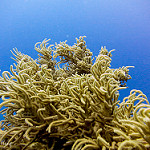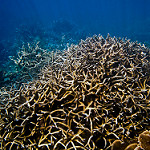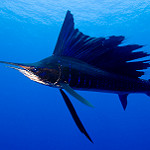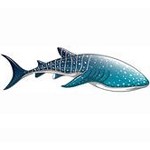Scuba diving in the world’s sixth largest country and one that is a continent entirely on its own is bound to offer some spectacular sights, especially when you consider that Australia is surrounded by the rich Indian and Pacific Oceans. As if this island continent, which is often considered the largest island in the world, needed any more reason to boast, Australia is host to an immense coral reef known as the Great Barrier Reef. The Great Barrier Reef is the biggest coral reef in the world and is made up of 2900 distinct reefs over a 2000 km stretch within the Coral Sea off the Queensland coast. As a point of size reference, this length means that the Great Barrier Reef is larger than the Great Wall of China. In fact, these magnificent reefs are the only living things observable from space, so it’s no wonder why they form part of the Seven Wonders of the World.
Best Diving Destinations in Australia
Without a doubt, the most well-known and popular destination to dive in Australia is the Great Barrier Reef, and divers will need to visit Cairns in the north of Queensland to access the many incredible dive sites of the Great Barrier Reef.
Cairns
There is always something to see when visiting the Great Barrier Reef. January-April offers sightings of large and majestic marine animals such as the giant manta ray whereas May to August is known for sightings of the rare and wonderful dwarf minke whale. The period from October to November is well-known for being coral spawning time, when hundreds of divers take to the reefs at night time in the hopes of seeing this phenomenon of nature that resembles a snowstorm underwater.
Ribbon Reefs are immensely popular and best visited with a liveaboard operation to make the most of a wonderful experience. A must-do in this area is the world-famous Code Hole site featuring an abundance of larger-than-life potato groupers who are both intimidating and friendly. Although it is somewhat remote, dive sites in the Coral Sea make the trip worthwhile thanks to magnificent reefs that are teeming with marine life and superb visibility.
Contrary to what many may think, the land down under offers a number of other interesting diving locations away from the Great Barrier Reef that are certainly worth mentioning and visiting.
Ningaloo Reef
One such location, Ningaloo Reef, is on the western coast of the country and is accessible from both Exmouth and Coral Bay. Ningaloo reef presents diving opportunities throughout the year at its many individual dive sites that stretch over 250 km. Boasting many different types of fascinating marine species, dive sites on this fringing reef are known for regular sightings of large, highly-sought after animals such as whale sharks, humpback whales, turtles and majestic manta rays. The best time to spot a whale shark are in the months of March, April, May and June, whereas humpback whales are in the area from June to November. Dive operations in the area even arrange specific trips at certain times of the year for those wanting to see these magnificent creatures. Spoiling divers with their beauty, large manta rays are always about. Temperatures on this side of the country tend to be slightly cooler than other areas of Australia and average between 18-22°C. As the easiest access to Ningaloo Reef is from Exmouth, divers should also consider diving the 300m stretch of diverse and exciting marine life offered at Navy Pier in Exmouth. Here you can see stone fish, frog fish and even Wobbegong sharks. To completely round off a visit to this area of Australia, Rottnest Island in the mild waters of Perth is also worth a visit.
The major Australian cities namely Melbourne, Perth and Sydney, are also quite popular with divers and can easily be accessed from domestic and international locations. Divers will need to note that these southern cities are likely to present colder waters than the warm Great Barrier waters, so prepare for temperatures in the region of 15-22°C.
Sydney
Sydney is a surprisingly good location for scuba diving as it offers well-distributed sites that all have much to offer. Dive sites are accessible from both the shore and by boat. Popular shore dives include the sites surrounding Bare Island while Botany Bay and the world-famous Bondi Beach offer great sites just a short boat ride away.
Adelaide and Melbourne
Jetty dives are widespread across both Adelaide and Melbourne and offer divers the chance to view Australian macro marine life at its best. One such site in Weroona Bay, Portsea Pier, presents regular sightings of the unique leafy seadragon which is in the same genetic family as seashorses. These distinctive creatures can also be seen over in Adelaide’s Rapid Bay Jetty along with sponge crabs, stingrays, and spectacularly coloured nudibranchs. For the brave at heart, Neptune Islands is the place to get your thrills as caged Great White shark diving is available here.
Tasmania
Known for its gigantic kelp forests with individual kelp plants exceeding 20 metres in height, dive sites surrounding Tasmania tend to see fewer visitors but still offer incredible experiences. Steep walls, masses of fish of every variety and even macro diving opportunities are all reasons to visit these sites.
Getting to Australia
As is to be expected from such a large country, Australia has a number of international airports, all of which will offer direct links to the country’s capital – Cairns – the main access point for the Great Barrier Reef. A number of cities in neighboring Asia will also have connections to Cairns.
When to Visit Australia
Australia experiences directly contrasting seasons to northern hemisphere countries. Australia’s very hot summers are in the months of December, January and February whereas the mild winters are in June, July and August. Largely influenced by ocean currents, rainfall is scattered and varied throughout the year. In general, the northern areas of Australia experience a tropical climate, the south- east offers a more temperate climate and the south-west has a climate similar to what you would expect in the Mediterranean.
With Cairns being situated in the north where a tropical climate dominates, this port city experiences a wet season from December to May and a dry season from June to November. The dry season tends to be more popular, but divers can visit at all times of the year. The waters off the coast of Queensland remain at a fairly comfortable temperature regardless of the season, with averages between 24°C and 30°C.
Where to Stay in Australia
Australia offers an abundance of diving lodges, dive centres, liveaboard options and independent expedition companies offering a multitude of diving-related experiences. Each of the major diving locations is certain to have a host of accommodation options to suit every taste, and divers are likely to be spoilt for choice when making dive arrangements. Unfortunately due to the sheer size of Australia, the hardest choice is choosing which of these locations to explore as this will dictate the location of your base. Our expert opinion is: get down under and explore them all!
Travel tips
Feeling inspired and raring to go? Check out our Australia travel guide and start planning your next diving trip!

 Been diving in Australia? Please Vote!
Been diving in Australia? Please Vote!









 Click here to share your diving tips
Click here to share your diving tips